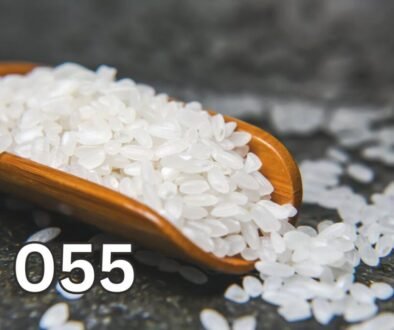The Alcohol Story: Did Alcohol Shape Human Evolution?
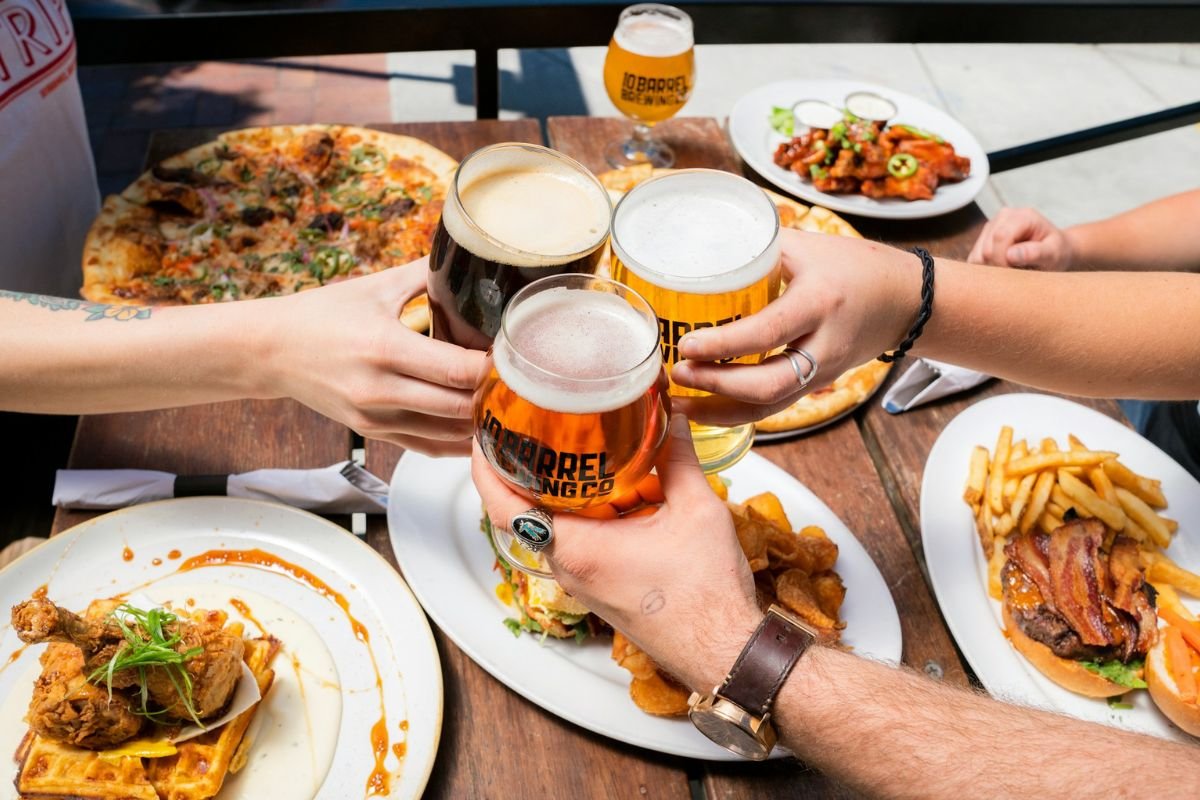
18 MARCH 2025
Disclaimer: Understanding Alcohol and Health Risks
Alcohol has been part of human history for thousands of years, but its effects are complex. While moderate drinking is sometimes linked to certain health benefits, such as a slight protective effect on heart health, excessive consumption carries serious risks. Long-term heavy drinking is associated with liver damage, addiction, and an increased likelihood of cancer.
Medical opinions on alcohol vary. Some experts advocate for total abstinence, emphasising the dangers, while others believe that moderate drinking can be part of a balanced lifestyle. The healthiest choice depends on the individual, some may benefit from avoiding alcohol altogether, while others may find moderation works best for them.
With that in mind, let’s explore a fascinating alcohol-related myth that has captivated people for generations.
Drunk Elephants in South Africa: A Wild Myth
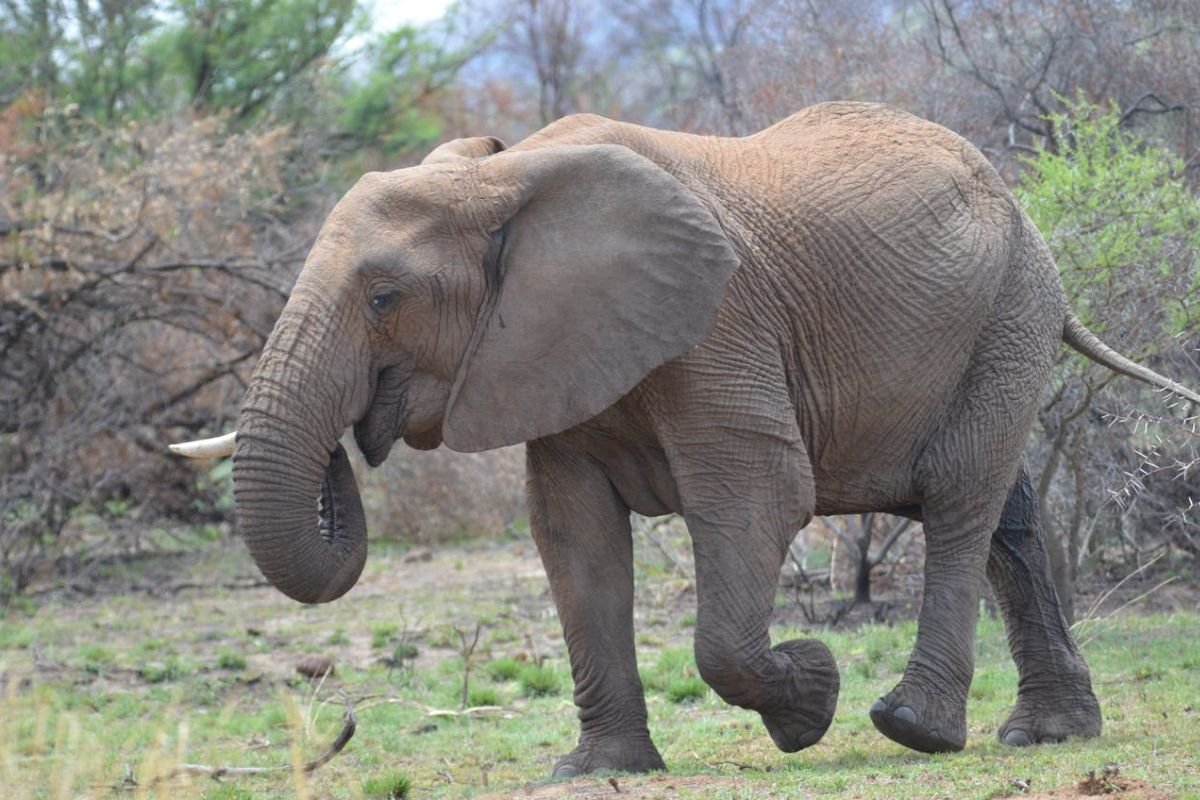
In South Africa, a sweet liqueur named Amarula is famous not just for its creamy taste but also for the elephant proudly displayed on its packaging. But why an elephant? The answer lies in its key ingredient: the marula fruit, a treat that African wildlife, especially elephants, can’t resist.
Marula fruits, about the size of small eggs, start off green and turn a golden yellow when ripe. Their juicy, sweet-and-sour flavour attracts a variety of animals, including giraffes, warthogs, ostriches, and of course, elephants. Found mainly in the savannas of Southern Africa, marula trees also grow in parts of East Africa, playing a vital role in the ecosystem.
Elephants are particularly drawn to these fruits, and their love for marula has fuelled an amusing and enduring legend: the idea that elephants get drunk from eating fermented marula fruit. But is there any truth to it?
The “Elephant Tree” and the Truth Behind the Myth
When marula fruits ripen, they can naturally ferment, producing small amounts of alcohol. It’s easy to imagine that an elephant munching on these fruits might get a little tipsy, especially since locals have reported seeing them swaying or stumbling after a feast.
However, scientists have debunked this charming myth. While marula fruit can ferment, the alcohol content remains extremely low. Given an elephant’s massive size and metabolism, they would have to consume an absurd amount of fermented fruit, far more than they naturally would, to feel any intoxicating effects.
So why do some elephants appear wobbly after indulging in marula fruit? The most likely explanations include overeating, playful behaviour, or simply the drowsy satisfaction of a full belly. Despite the lack of scientific proof, the legend of the “drunk elephant” persists, adding an amusing twist to their already fascinating relationship with the marula tree.
Interestingly, elephants play a crucial role in marula tree propagation. As they feast on the fruit, they disperse the seeds through their dung, helping new trees take root. This symbiotic relationship has earned the marula tree its affectionate nickname, the “elephant tree.”
While elephants may not actually get tipsy from marula fruit, their association with it has made them an iconic symbol of Amarula liqueur. It’s a story that blends nature, folklore, and our own human fascination with alcohol, because, as we’ll see, alcohol has been part of human DNA for far longer than you might think.
Debunking the Myth: Why Elephants Don’t Get Drunk
The idea of elephants getting tipsy on marula fruit is entertaining, but science tells a different story. As charming as it sounds, it’s practically impossible for an elephant to consume enough fermented fruit to experience intoxication. Let’s break it down.
The Math Behind the Myth
An adult African elephant weighs around 3,000 kilograms, that’s about 40 times the weight of an average human. If a person weighing 75 kilograms needs roughly 50 millilitres of 53% alcohol (a little less than a shot of strong liquor) to start feeling tipsy, an elephant would need a proportionate amount, around 2 kilograms of pure 53% alcohol to reach a similar effect.
Now, let’s look at marula fruit. When fully fermented, it contains only about 3% alcohol. For an elephant to get even remotely drunk, it would need to devour at least 35 kilograms of ripe, fully fermented marula fruit in a very short period. But here’s the catch, elephants don’t binge on just one type of food. They are natural foragers, eating a wide variety of leaves, bark, and fruits rather than stuffing themselves with a single ingredient.
Unless someone went out of their way to serve an elephant a buffet of nothing but fermented marula fruit (which would be quite the experiment!), the idea of a tipsy elephant remains a delightful, yet unrealistic, legend.
The Real Science: Alcohol Metabolism in Elephants
Numbers aside, there’s another reason elephants don’t get drunk in the wild, how their bodies process alcohol.
Genetic studies suggest that elephants don’t have an abnormally high tolerance for alcohol, but that’s not the main issue. The real limitation is the marula fruit itself, even when fully fermented, its alcohol content is simply too low to cause any significant effect, especially in an animal of such size.
Even if an elephant were to eat an unusually large amount of ripe marula fruit, its natural metabolism would process the alcohol efficiently, preventing intoxication. So while the calculations might look convincing at first, the combined factors of elephant behaviour, digestion, and marula fruit chemistry make the myth of drunken elephants more fantasy than fact.
So why does the story persist? Probably because it’s just too fun to let go, after all, the idea of giant, stumbling elephants adds a bit of humour to the world of wildlife. But next time you hear someone mention drunken elephants, you’ll know the real science behind the legend!
Mischievous Monkeys and Their Taste for Alcohol
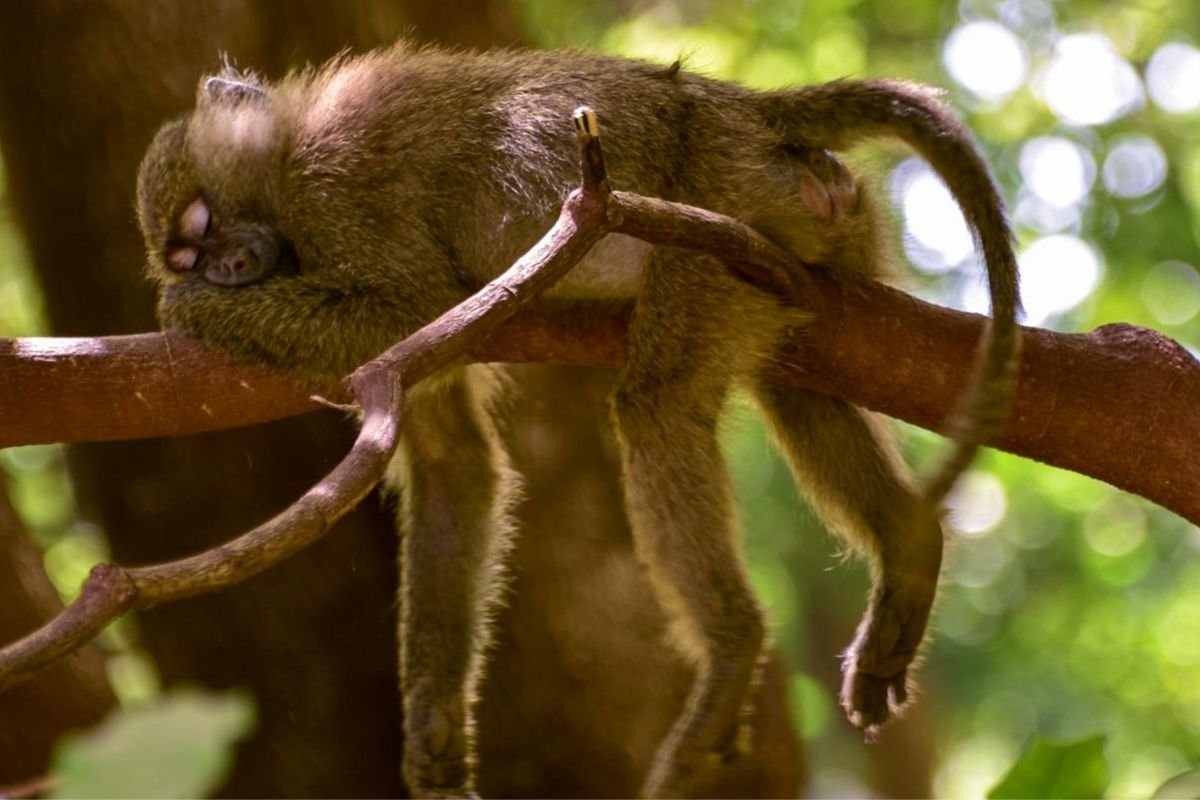
On the Caribbean island of St. Kitts, tourists often experience a bizarre sight, vervet monkeys boldly swiping cocktails from unattended tables. These little thieves have no reservations about grabbing a fruity drink and taking a sip, much to the surprise (and amusement) of onlookers. But what makes them so eager to indulge?
A Sweet Habit: How Monkeys Developed a Taste for Booze
Scientists believe the monkeys’ attraction to alcohol might stem from their love of sugar. St. Kitts, once a major sugarcane producer, still has fields where sugarcane sometimes ferments naturally. Over time, vervet monkeys may have encountered this fermented fruit and developed a taste for its sweet, slightly alcoholic flavour.
Unlike elephants and marula fruit, where the drunken effect is mostly myth, these monkeys actually do show signs of intoxication. After sneaking a few sips, some stumble around, sway, or even become a little more… social. And what’s more? They keep coming back for more!
Do Monkeys Truly Crave Alcohol?
So, are these monkeys actually drinking for the buzz, or is something else at play?
While their antics might look like evidence of addiction, scientists think it’s more about the sugar than the alcohol. Cocktails are loaded with sweet mixers, making them an irresistible treat. Monkeys, like humans, are naturally drawn to sugary foods because they provide quick energy. The alcohol is just an added (and unintended) effect.
However, researchers have observed something interesting, some monkeys drink more than others. Just like humans, their drinking habits vary. Some prefer non-alcoholic sugary drinks, while others seem to have a stronger preference for boozy beverages. In controlled studies, certain monkeys consistently go for alcohol, while others avoid it completely.
Whether they’re party animals or just opportunistic foragers, one thing’s for sure, these monkeys know how to crash a beachside happy hour!
Chimpanzees and Alcohol: A Curious Interaction
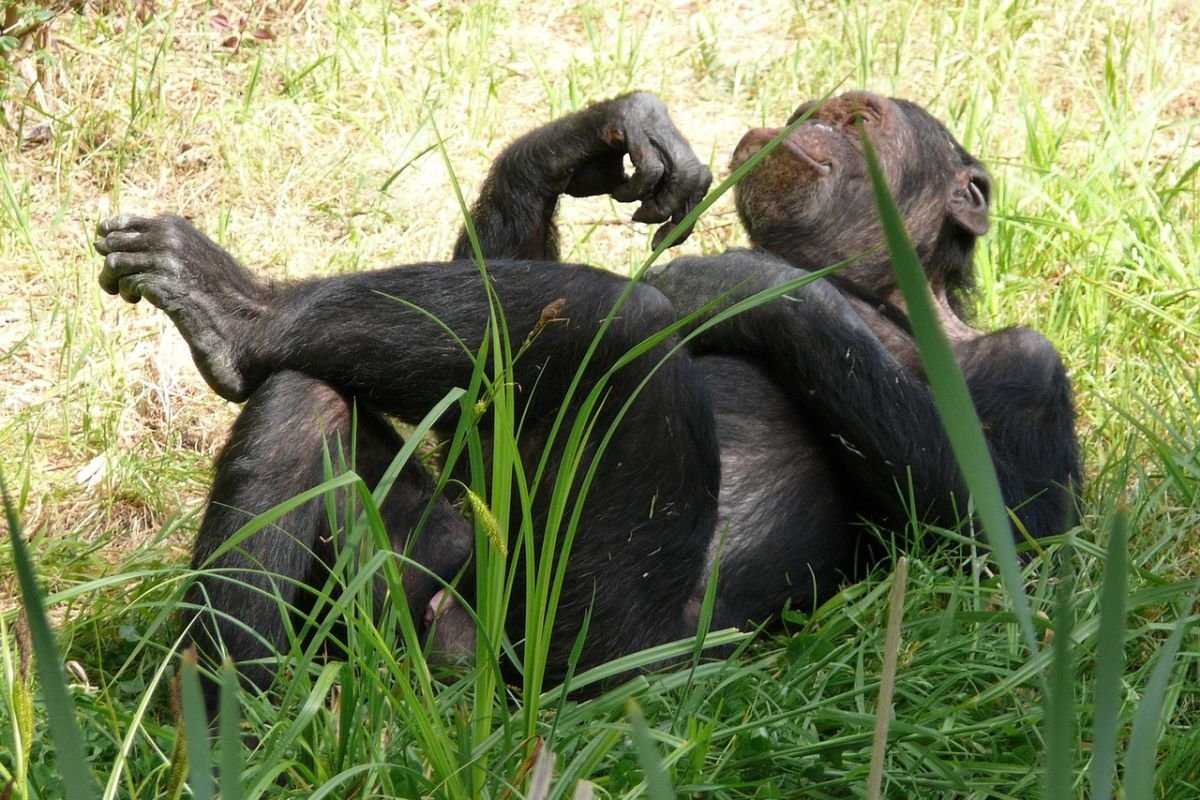
We often think of alcohol consumption as a uniquely human behaviour, but what about our closest relatives in the animal kingdom? Do chimpanzees ever indulge in a drink?
In 2015, British primatologist Professor Kimberley Hockings set out to answer this question with a 17-year study of wild chimpanzees in the Bossou Forest of Guinea, West Africa. The Bossou Forest, famous for long-term primate research and eco-tourism, provided the perfect backdrop for this intriguing observation.
What she and her team discovered was fascinating: while chimpanzees don’t actively seek out alcohol, some do take advantage of naturally fermented palm sap left behind by humans. However, their drinking is more of an opportunistic indulgence rather than a deliberate habit.
The Raffia Palm and Chimpanzees’ Secret Sips
In Bossou, locals tap raffia palm trees for their sweet sap, collecting it in containers where it naturally ferments into an alcoholic beverage with an alcohol content of 3% to 7%, comparable to beer. This sets the stage for the occasional tipsy primate.
Chimpanzees, ever the curious foragers, have been spotted visiting these sap collection sites. Using leaves, they scoop up the liquid and sip away. Out of 26 observed chimpanzees, 13 were seen drinking the fermented sap, with one particularly enthusiastic individual downing the equivalent of 84.9 milliliters of pure alcohol in a single sitting!
Do Chimps Get Drunk?
After indulging, some chimpanzees appeared to slow down, rest, or even show subtle signs of intoxication. But while this might seem like a jungle happy hour, there’s a key difference between humans and chimps, our alcohol tolerance.
Humans, for better or worse, have developed a genetic adaptation to break down alcohol more efficiently, thanks to an ancient mutation in the ADH enzyme. Chimps, on the other hand, have no such advantage, meaning even small amounts of alcohol could affect them more noticeably.
Still, these primates aren’t exactly swinging through the trees in a drunken daze. Their drinking habits remain rare and situational, making it clear that while humans might enjoy a drink for fun, chimps are more likely just taking advantage of an easy calorie source.
That said, it’s hard not to smile at the thought of a chimp casually sipping a palm sap “cocktail” in the middle of the jungle, a reminder that nature is full of surprises!
Reckless Dolphins: Are They Getting High on Pufferfish?
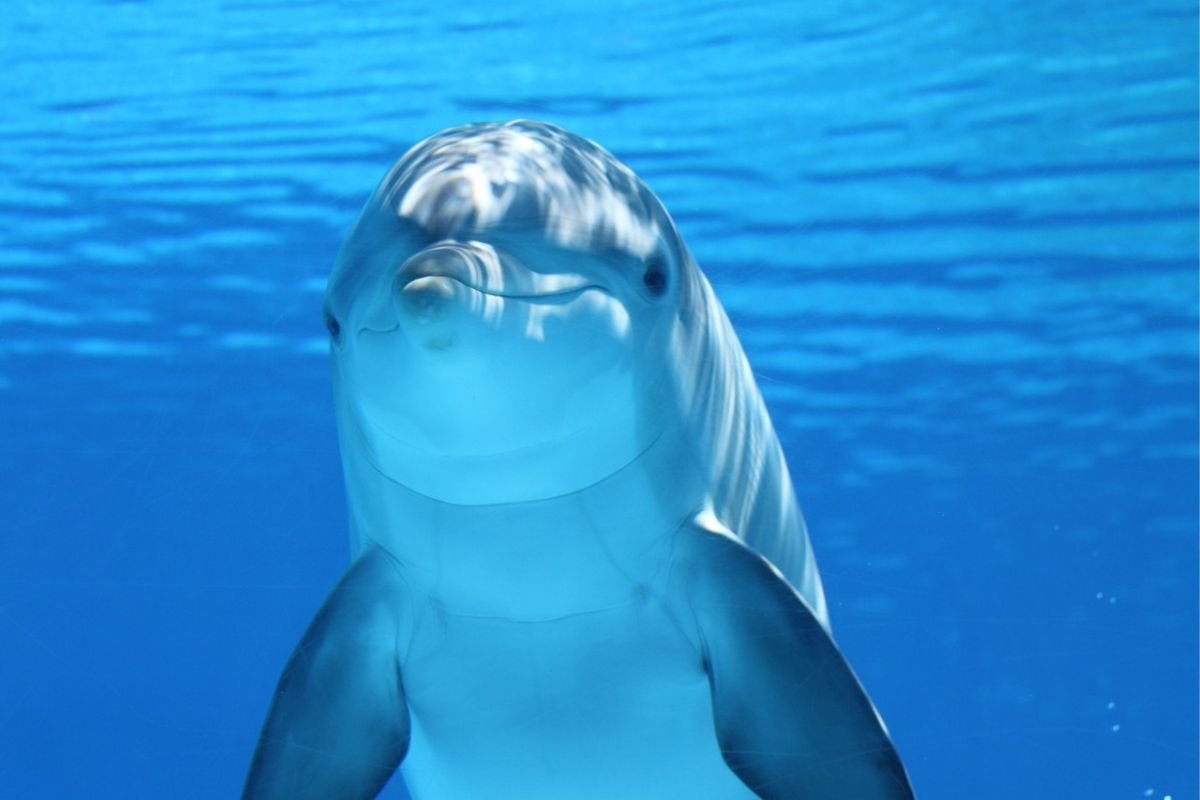
We know dolphins are playful, intelligent, and full of surprises, but could they also be thrill-seekers? While alcohol isn’t naturally present in ocean water, dolphins have been spotted engaging with a different mind-altering substance: the neurotoxin of the pufferfish.
Dolphins and Their Toxic Toy
In 1995, marine biologist Lisa Steiner observed something extraordinary: dolphins carefully handling pufferfish in a way that seemed far from predatory. Rather than attacking the fish outright, the dolphins gently chewed on them, prompting the pufferfish to release a small amount of its potent neurotoxin, tetrodotoxin. But instead of being deterred, the dolphins passed the fish around like a shared treat, taking turns nibbling before floating calmly near the surface, almost as if they were experiencing a mild high.
Intoxication or Just Play?
This behaviour raises an intriguing question: Are dolphins deliberately getting intoxicated, or is this just another example of their playful curiosity?
After interacting with the pufferfish, dolphins have been observed acting unusually calm, sometimes appearing disoriented or even mesmerised by their surroundings. Since large doses of tetrodotoxin are lethal, their careful handling suggests they might understand the risks, demonstrating remarkable precision by nibbling just enough to trigger the toxin without harming the fish.
But does this mean they’re seeking out the sensation on purpose? While some researchers believe the dolphins are experimenting with a natural intoxicant, others argue that this could be a form of social play or accidental exposure rather than intentional “drug use.”
A Risky Game for the Pufferfish
For the pufferfish, these encounters must be terrifying. Their usual defence, puffing up into a spiky ball, does little to deter dolphins, who seem more entertained than intimidated. The good news? Most pufferfish survive these interactions, albeit a little worse for wear.
Dolphins, on the other hand, remain a mystery. While their interactions with pufferfish could hint at an intentional pursuit of intoxication, there’s no definitive proof. Are they experimenting with mind-altering substances, or is this just another example of their boundless curiosity?
Until scientists can decode the true motivations behind this behaviour, one thing remains clear: dolphins never cease to surprise us.
Why Are Humans So Alcohol-Tolerant?

It’s no secret that animals sometimes stumble into drunken misadventures, whether it’s South African elephants feasting on marula fruit, vervet monkeys swiping cocktails, or chimpanzees lapping up fermented palm sap. But while these encounters with alcohol are mostly accidental, humans are different. Not only do we consume alcohol deliberately, but we’re also uniquely equipped to handle it.
So, what makes humans so tolerant of alcohol compared to other species?
The Survival Advantage of Alcohol Metabolism
In the wild, alcohol consumption can be dangerous. An intoxicated animal is slower, less alert, and far more vulnerable to predators. Despite this, some animals are drawn to fermented fruits and other natural sources of alcohol, not because they want to get tipsy, but because they’re after an easy source of sugar and energy.
Humans, however, stand apart. Unlike many other animals, we can process alcohol efficiently, thanks to a special set of enzymes that break it down before it becomes toxic. This adaptation likely gave our ancestors an edge, allowing them to eat overripe, fermented fruit without getting dangerously impaired.
How Genetics Shaped Alcohol Tolerance
In April 2020, geneticist Dr. Mareike Janiak published a groundbreaking study in The Royal Society – Biology Letters, shedding light on why some species metabolise alcohol better than others. Her research focused on the ADH7 gene, which produces alcohol dehydrogenase class 7, an enzyme that rapidly breaks down ethanol in the body.
By comparing the ADH7 gene across 85 mammal species, Janiak found that animals with frequent exposure to fermented foods, such as humans and fruit bats, had highly efficient versions of this gene. This adaptation would have been a major survival advantage, helping these species avoid intoxication while still benefiting from the calories in fermented fruit and nectar.
On the other hand, species that don’t regularly encounter alcohol, like elephants, lack this efficient metabolism. And that leads us to one of the biggest myths about drunken wildlife…
Are Elephants Really Getting Drunk on Marula Fruit?
The idea of elephants staggering around the savannah after feasting on fermented marula fruit is a fun mental image, but science says otherwise.
Dr. Janiak’s research confirmed that elephants lack a functional ADH7 gene, meaning their bodies struggle to process alcohol efficiently. But even with their low alcohol tolerance, the sheer amount of fermented marula fruit required to intoxicate an elephant is practically impossible. Given their massive size and the natural limits on fermentation, elephants aren’t likely to experience much of an effect, debunking the popular myth of tipsy elephants.
What About Our Primate Relatives?
If humans evolved to metabolise alcohol efficiently, what about our closest relatives, chimpanzees and monkeys? Dr. Janiak’s study found that while primates are better at processing alcohol than elephants, they still don’t match human efficiency.
Chimpanzees and monkeys can tolerate alcohol to some extent, but their metabolism is slower, which is why they often show signs of intoxication after consuming fermented fruit or stolen cocktails. In contrast, humans have fine-tuned this ability over millennia, making alcohol a significant part of many cultures worldwide.
So, the next time you raise a glass, remember, your ability to handle alcohol is a genetic inheritance from ancient fruit-eating ancestors. Cheers to evolution!
The Evolutionary Link Between Alcohol Tolerance and Diet
Picture a ripe piece of fruit lying on the forest floor, its sweet aroma attracting passing animals. Over time, natural yeasts begin to break down the sugars, producing ethanol, a process as old as nature itself. While many animals instinctively avoid fermented fruit, our early ancestors took a different path.
Millions of years ago, the world was changing. Tropical forests were shrinking, forcing some primates to descend from the trees and explore new food sources. Instead of relying solely on freshly picked fruit, they began scavenging fallen fruit from the forest floor, which often contained small amounts of alcohol due to fermentation.
How Fermented Fruit Shaped Evolution
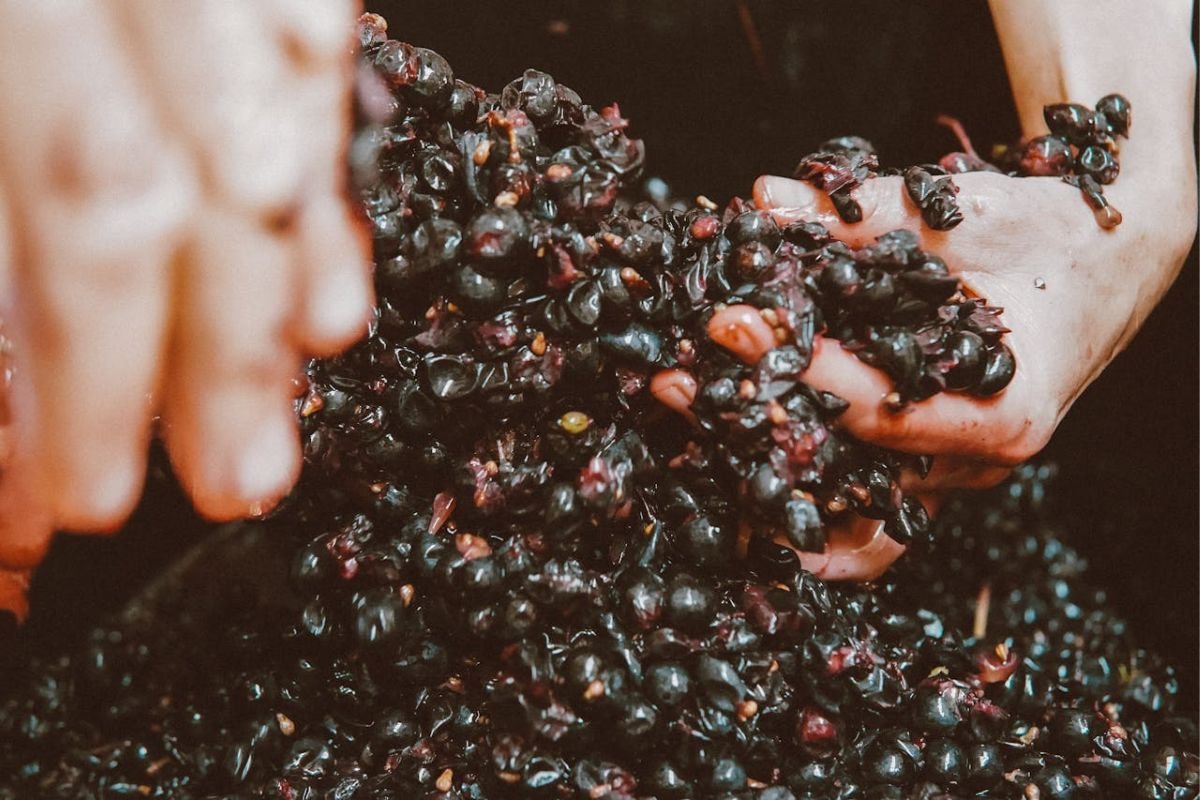
This shift in diet created a unique challenge. Unlike fresh fruit, fermented fruit came with an extra ingredient: ethanol. While other animals steered clear, early human ancestors adapted, developing a key genetic mutation in the ADH7 gene, one that allowed them to metabolise alcohol more efficiently.
Why was this important? Consuming fermented fruit provided a survival advantage. Even though the fruit contained alcohol, it was still packed with calories and nutrients. Being able to eat it without suffering severe intoxication meant early humans could sustain themselves in harsher environments without becoming sluggish or vulnerable to predators.
The Survival Advantage of Alcohol Metabolism
With time, this ability became hardwired into human genetics. Those who could efficiently break down ethanol had a better chance of staying alert, moving quickly, and avoiding danger. What started as a minor adaptation soon played a role in survival, illustrating how even something as unexpected as alcohol tolerance could influence evolution.
Ethanol Consumption Across Species: Survival, Not Indulgence
Humans aren’t the only ones who evolved to handle alcohol. Dr. Mareike Janiak’s research inspired further studies, revealing that certain species exposed to fermented food have developed their own ways to metabolise ethanol effectively.
Aye-Ayes and Fermented Nectar
Deep in the forests of Madagascar, aye-ayes, a type of nocturnal lemur, have been caught sipping on fermented nectar from the Traveler’s Palm. This odd-looking primate has developed a tolerance for ethanol, likely because this nectar provides a reliable food source during certain seasons. Their ability to digest it without becoming impaired suggests that, like early humans, aye-ayes evolved to handle fermented food as a survival strategy.
Fruit Bats: Nature’s Drunken Flyers?
Fruit bats are another fascinating example. These flying mammals feast on massive amounts of ripe and sometimes fermented fruit, ingesting more alcohol than many land-dwelling animals. But rather than getting tipsy, they process ethanol efficiently, thanks to specialised metabolic pathways different from those found in humans. While they don’t share the same ADH7 mutation, their adaptation follows a similar pattern, demonstrating that evolution finds different ways to solve the same problem.
Convergent Evolution: The Common Thread
Despite their different evolutionary backgrounds, humans, aye-ayes, and fruit bats all share a similar trait, alcohol tolerance shaped by dietary habits. This phenomenon, known as convergent evolution, shows how unrelated species can develop comparable adaptations when faced with the same environmental challenges.
In other words, the ability to handle a bit of alcohol wasn’t about fun, it was about survival.
Why Haven’t Elephants Evolved a “Drinking Gene”?
So, if humans, fruit bats, and even some primates have evolved ways to metabolise ethanol, why haven’t elephants?
Not Enough Alcohol to Matter
Unlike early humans, whose diets included frequent doses of fermented fruit, elephants rarely encounter alcohol in the wild. While they do enjoy marula fruit when it’s in season, their diet mainly consists of grass, leaves, bark, and other plant matter, food sources that contain little to no ethanol.
For a species to evolve a genetic trait, like an improved ability to break down alcohol, there has to be consistent and significant evolutionary pressure. If ethanol exposure is only an occasional event, the genetic adaptations needed to process it more efficiently simply don’t have a reason to develop.
Elephants Don’t Face the Same Risks as Humans
Early human ancestors needed an efficient alcohol metabolism because intoxication could mean slower reflexes, impaired decision-making, and vulnerability to predators. But elephants live in a very different world.
With few natural predators once they reach adulthood, an elephant doesn’t need to stay constantly alert to avoid becoming a meal. Even if one were to feel a little off balance after munching on fermented fruit, it wouldn’t make them an easy target. This lack of survival pressure means there’s no strong evolutionary drive to develop alcohol tolerance.
Evolution Favours Need, Not Want
Evolution is all about survival, not indulgence. Humans, fruit bats, and other ethanol-tolerant species evolved their alcohol-processing abilities because they needed to, not because they enjoyed an occasional buzz. Elephants, on the other hand, simply never faced a strong enough reason to develop the same adaptation.
So while elephants may still munch on marula fruit, the idea of them getting drunk remains more myth than reality. If they had evolved a “drinking gene,” though, who knows? Maybe we’d be telling very different stories about the wild, party-loving elephants of Africa.
The Influence of Alcohol on Creativity

Some of history’s most celebrated writers and artists had a complicated relationship with alcohol. It’s long been rumoured that a drink (or several) helped unlock their creative genius. But is there truth to this idea, or is it just another romanticised myth of tortured artists?
Creativity in a Bottle? History’s Drunken Geniuses
Take Ernest Hemingway, for example. Known for his sharp, economical prose, he was also known for his love of a good drink. Though often attributed to him, the famous quote “Write drunk, edit sober” likely wasn’t his, but it certainly reflects the perception of alcohol as a creative aid.
Then there’s Dylan Thomas, whose poetic brilliance was matched only by his legendary drinking habits. His works, including Do Not Go Gentle into That Good Night, were often written during bouts of heavy alcohol consumption.
And while we can’t say for certain that William Shakespeare wrote under the influence, his plays frequently referenced drinking culture, suggesting that alcohol was an ever-present part of his world.
Even F. Scott Fitzgerald, who captured the excess of the Jazz Age in The Great Gatsby, struggled with alcoholism throughout his career. Some argue that his drinking fuelled his creativity, while others believe it ultimately shortened his literary legacy.
But why does alcohol seem to go hand in hand with creativity? Does it actually enhance artistic thinking, or is it just a historical coincidence?
Alcohol and Creativity: What Science Says
Modern neuroscience offers an interesting perspective. While alcohol doesn’t magically make someone more creative, it does affect the brain in ways that might encourage out-of-the-box thinking. Specifically, it lowers inhibitions and quiets the inner critic, allowing ideas to flow more freely, even if they’re not all great ones.
A study from Harvard University sheds light on why this happens, focusing on two key areas of the brain:
-
The Inner Brain (VMPFC): The Dreamer
The ventromedial prefrontal cortex (VMPFC) is the emotional and imaginative centre of the brain. It governs creativity, social connections, and subjective value judgments. When active, it helps generate bold ideas and see connections that a purely logical mind might dismiss. -
The Outer Brain (DLPFC): The Editor
The dorsolateral prefrontal cortex (DLPFC) is the brain’s executive function hub. It’s responsible for self-control, logical reasoning, and critical thinking. This is the part of the brain that helps us plan, analyse, and filter our thoughts before we say (or write) them.
When we drink alcohol, the DLPFC, the cautious, rational “editor” of the brain, becomes less active. This allows the VMPFC, the free-spirited “dreamer”, to take over. The result? More uninhibited thinking, fewer self-imposed restrictions, and possibly a rush of creative ideas.
Of course, this isn’t to say that alcohol makes people more creative in the long run. While it might temporarily silence self-doubt, it also impairs memory, focus, and the ability to refine ideas, hence why Hemingway supposedly advised editing sober.
So, does alcohol unlock creativity? The truth is, it might help loosen mental restraints for some people, but sustained creative brilliance comes from something much stronger: practice, discipline, and inspiration, whether fuelled by a drink or not.
The Tug-of-War in the Brain
Have you ever felt torn between logic and emotion, like part of you wants to follow your heart while another part urges caution? That’s not just a metaphor. It’s a battle happening in your brain.
Neuroscientists have discovered that two key regions, the ventromedial prefrontal cortex (VMPFC) and the dorsolateral prefrontal cortex (DLPFC), often work in opposition. When one is highly active, it tends to suppress the other.
This neurological tug-of-war influences how we think and act:
- Creative Thinking → When you’re deep in artistic expression, storytelling, or imaginative brainstorming, your inner brain (VMPFC) takes the lead, dialling down logical constraints.
- Analytical Thinking → When you’re solving a complex math problem or making a strategic decision, your outer brain (DLPFC) dominates, keeping emotions in check.
Are You More of an Artist or a Scientist?
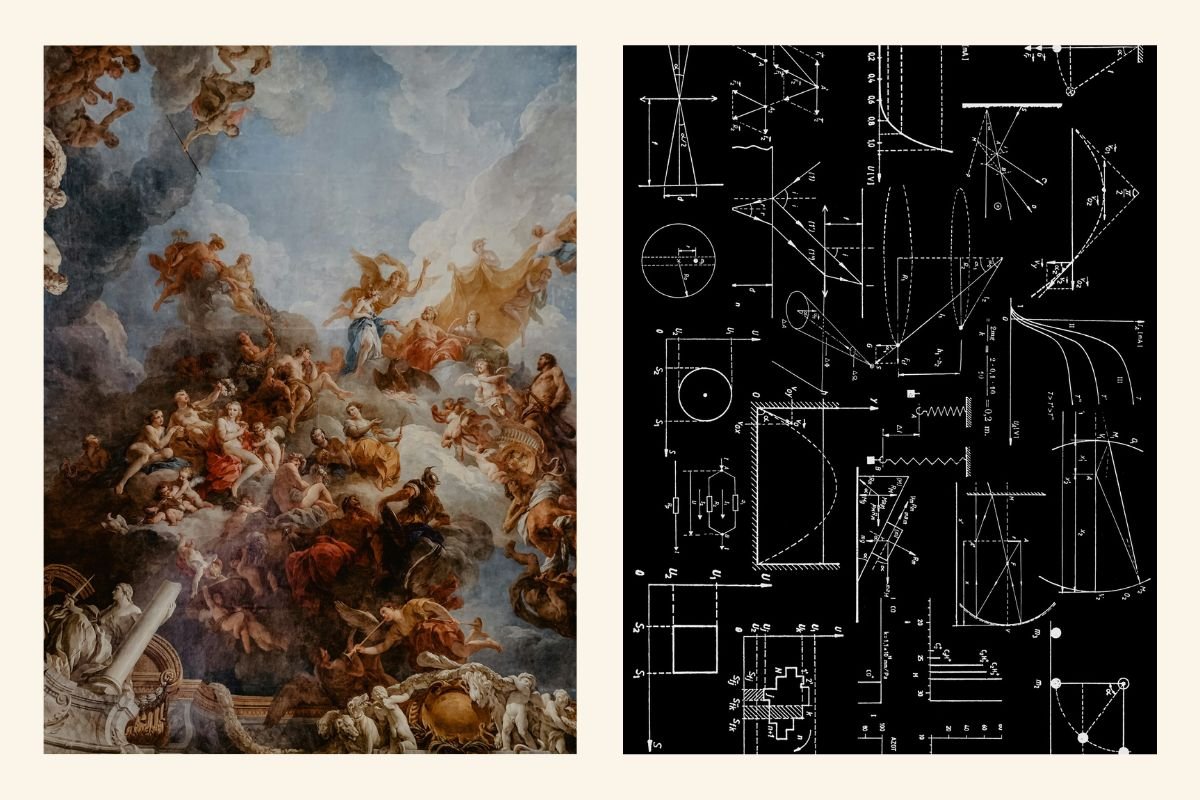
Think of it like this:
- The Artist (Emotional, Imaginative) → Picasso, whose expressive paintings broke artistic norms, likely relied more on the VMPFC, making logical precision a lesser priority.
- The Scientist (Logical, Methodical) → Einstein, whose theories reshaped physics, had a mind that leaned on the DLPFC, favouring structured reasoning over free-flowing artistic intuition.
But does this mean you have to be either an artist or a scientist? Not necessarily.
Breaking the Mold: Leonardo da Vinci
Some rare individuals seem to bridge both worlds. Leonardo da Vinci was a master of both art and science, painting masterpieces while conceptualising flying machines centuries ahead of his time. His ability to balance creative vision with analytical precision suggests that, with the right mindset, we don’t have to choose between logic and imagination.
That balance is key, not just in art and science, but in everyday decision-making.
The Everyday Battle Between Emotion and Logic
We all experience moments where our rational side is at odds with our emotional impulses.
Picture this: You’re rushing through an airport to catch a flight. Someone shoves past you, spilling coffee on your bag and throwing in a snide remark for good measure. How do you react?
- Impulse Takes Over (VMPFC in Control) → You snap back, maybe shout at them, or even push them in return. Your emotional brain is leading the charge, prioritising your feelings over the consequences.
- Logic Kicks In (DLPFC Steps Up) → You take a deep breath, decide it’s not worth missing your flight, and keep moving. Your rational brain overrules the impulse, thinking about the bigger picture.
Finding the Right Balance
Neither approach is “right” or “wrong”, it depends on the situation. The key is knowing when to let emotion guide you (passion, empathy, creativity) and when to let logic take control (planning, discipline, problem-solving).
Rather than being locked in a constant struggle, these two parts of the brain work best when they collaborate, helping us make decisions that are both meaningful and practical.
Ignorance Is Bliss – Or Is It?

Imagine you’re in the same airport scenario from earlier, but this time, you’ve had a few drinks. Someone bumps into you, spilling coffee on your bag, and throws in a snide remark. Do you shrug it off, or snap back without thinking?
Chances are, alcohol tilts the scales toward a more impulsive reaction. But why?
How Alcohol Disrupts the Brain’s Balance
Alcohol doesn’t exactly boost emotional thinking, it weakens rational thinking. It dampens the activity of the DLPFC (your brain’s logical “brakes”), leaving the VMPFC (your emotional core) in the driver’s seat.
With impulse control lowered, emotions take over. That’s why intoxicated people often:
- Overreact emotionally to minor situations
- Make reckless decisions they wouldn’t normally consider
- Struggle to assess long-term consequences
This is also why alcohol is often linked to arguments, risky behaviour, and impaired judgment. It’s not enhancing emotions, it’s simply removing the filters that usually keep them in check.
Alcohol, Creativity, and Emotional Expression
We’ve already seen that emotional depth plays a key role in creativity. So could alcohol’s ability to quiet the brain’s rational control actually help the creative process?
For some individuals, possibly.
By lowering inhibition, alcohol might allow freer access to imaginative thought, helping people tap into raw emotions without overanalysing them. This could explain why some writers, poets, and artists have been drawn to drinking as part of their creative process.
But does alcohol cause creativity? Not exactly.
Dylan Thomas: A Case Study in Alcohol and Art
Take Dylan Thomas, the poet behind Do Not Go Gentle into That Good Night. His work is deeply emotional, layered with rich imagery and intense feeling. And yes, he was a well-known heavy drinker.
Did alcohol fuel his creativity? Maybe in the short term, by lowering inhibitions. But it also contributed to serious health issues, personal struggles, and ultimately, his premature death.
His genius wasn’t in the bottle, it was in his talent, experiences, and emotional insight. Alcohol may have been a companion in his creative process, but it was also a destructive force in his life.
Why Rational Thinking and Alcohol Don’t Mix
While some creatives have credited alcohol with loosening their imagination, the same isn’t true for fields that rely on logic and precision.
You rarely hear of a scientist saying, “I had a few drinks and then cracked the secret to quantum mechanics.” That’s because structured problem-solving depends on a fully engaged DLPFC, which alcohol actively suppresses.
In fields like math, physics, and engineering, where focus and precision matter, drinking is more likely to disrupt breakthroughs than inspire them.
The Value of Letting Go
So where does this leave us? Should we all drink to unlock our creativity? Not necessarily.
But there is something to be said for moments of emotional release.
Letting go of rigid control, whether through artistic expression, imaginative play, or stepping away from overthinking, can spark fresh ideas. That doesn’t mean alcohol is the answer, but the principle remains: sometimes, loosening the grip of logic can lead to unexpected inspiration.
After all, as the saying goes, ignorance is bliss. But the trick is knowing when to embrace it, and when to keep your rational mind firmly in place.
Final Thoughts
Creativity and reason are like two sides of the same coin, each with its own power, each shaping the way we see and interact with the world. While alcohol may loosen the reins of logic, true inspiration doesn’t come from a bottle, it comes from the depth of our experiences, emotions, and the ability to think freely. The real magic lies in knowing when to let go and when to take control.
If this article sparked new thoughts or offered fresh insights, share it with someone who’d appreciate it. Stay tuned for my next piece, there’s always more to explore!

